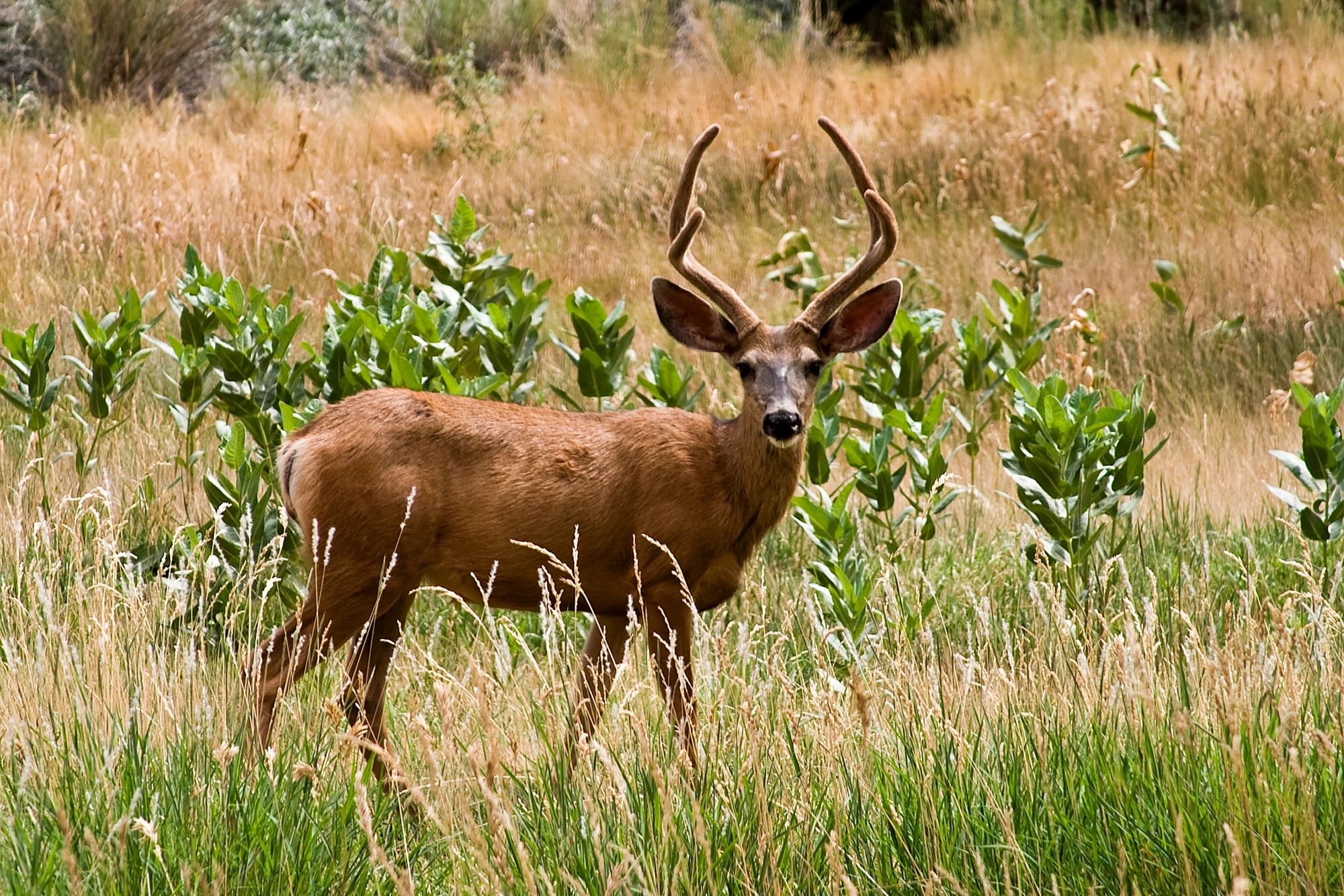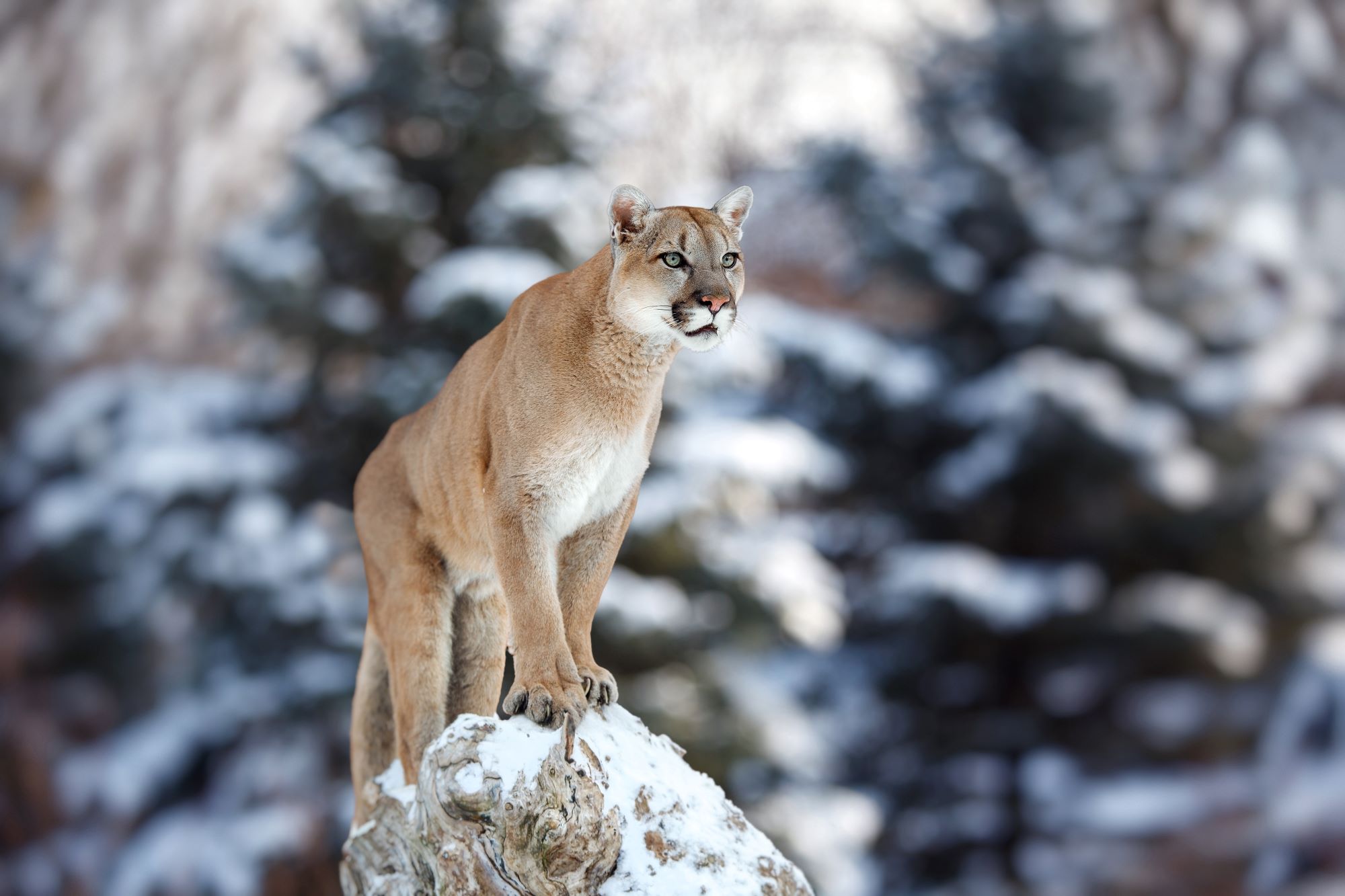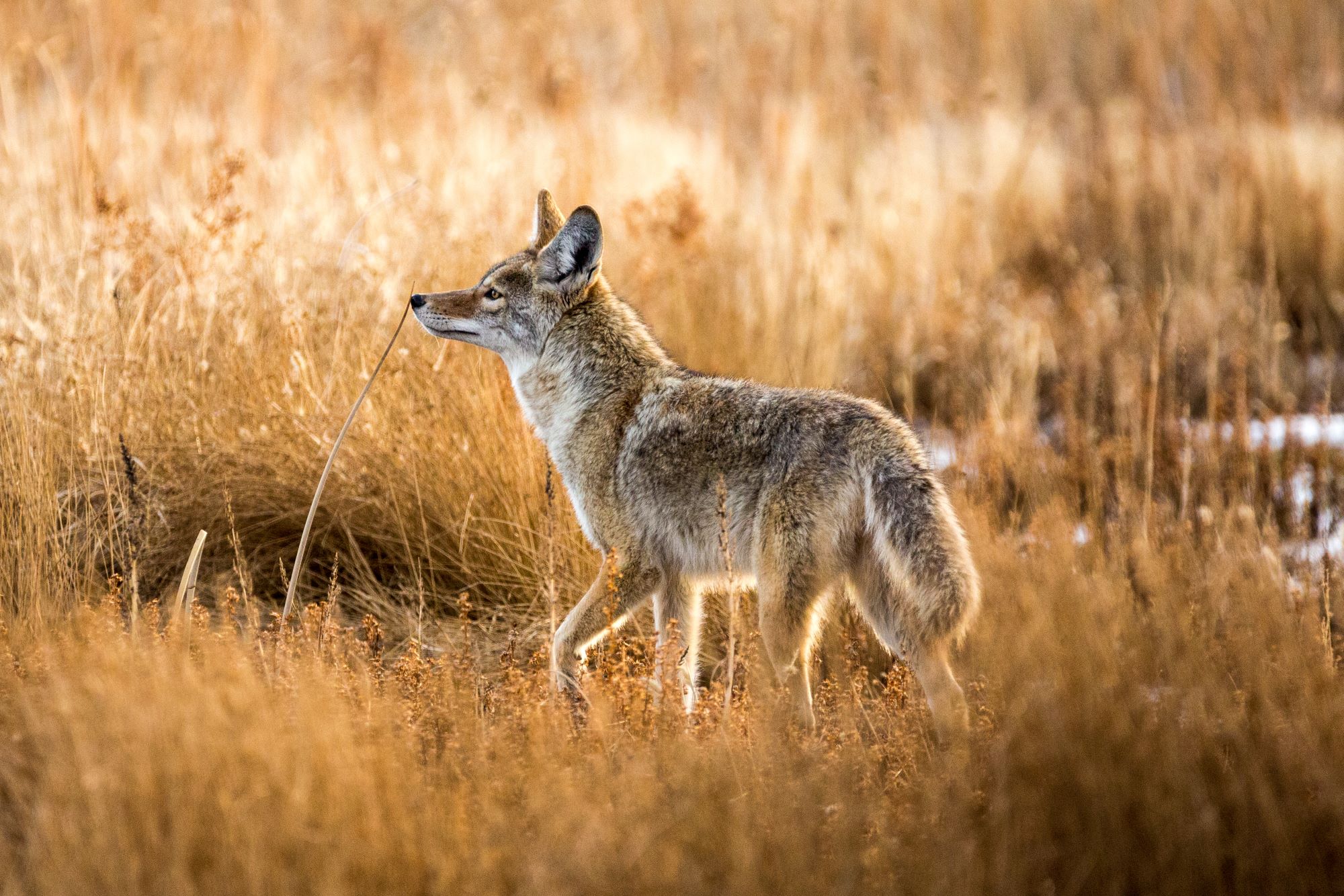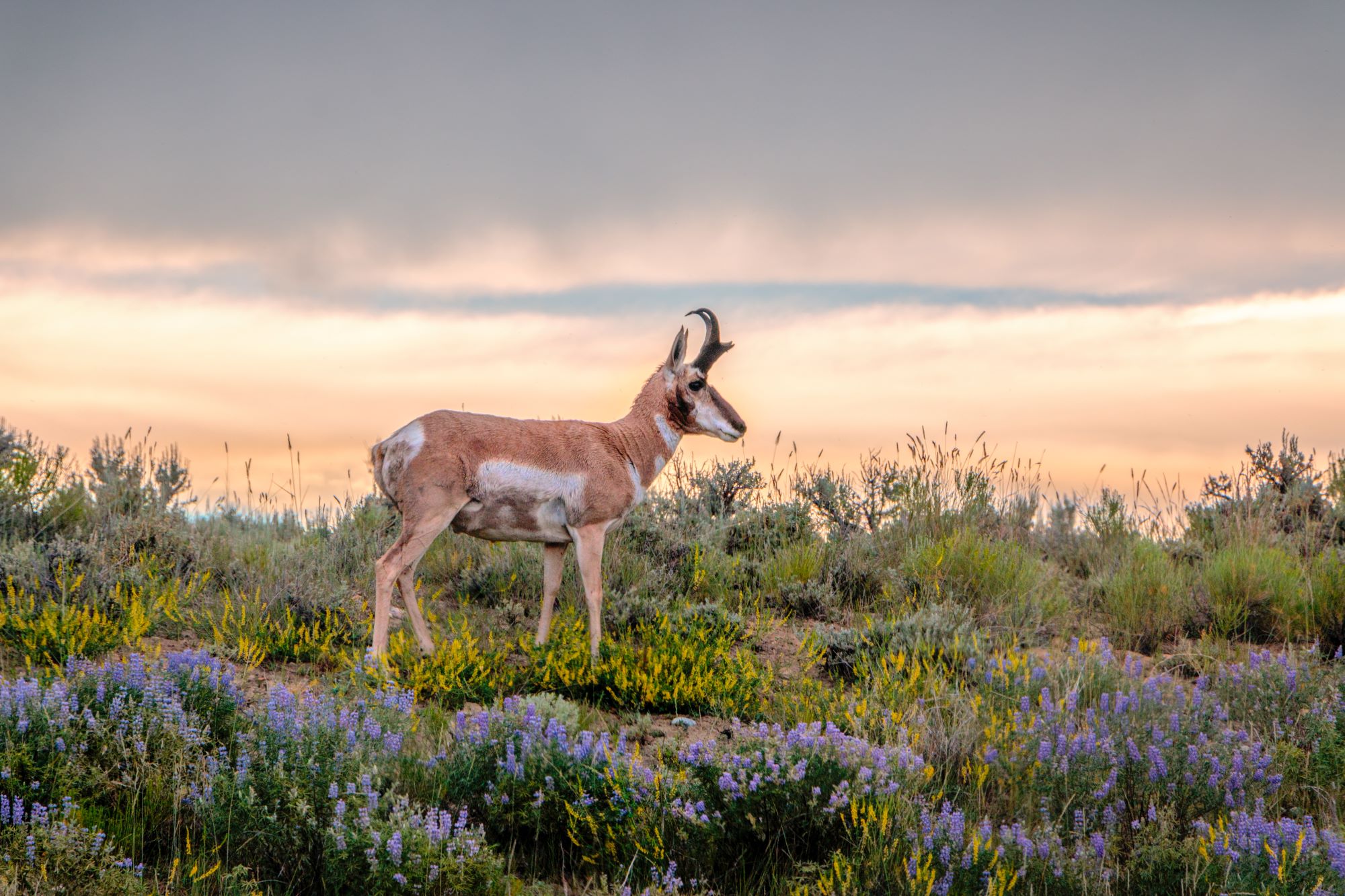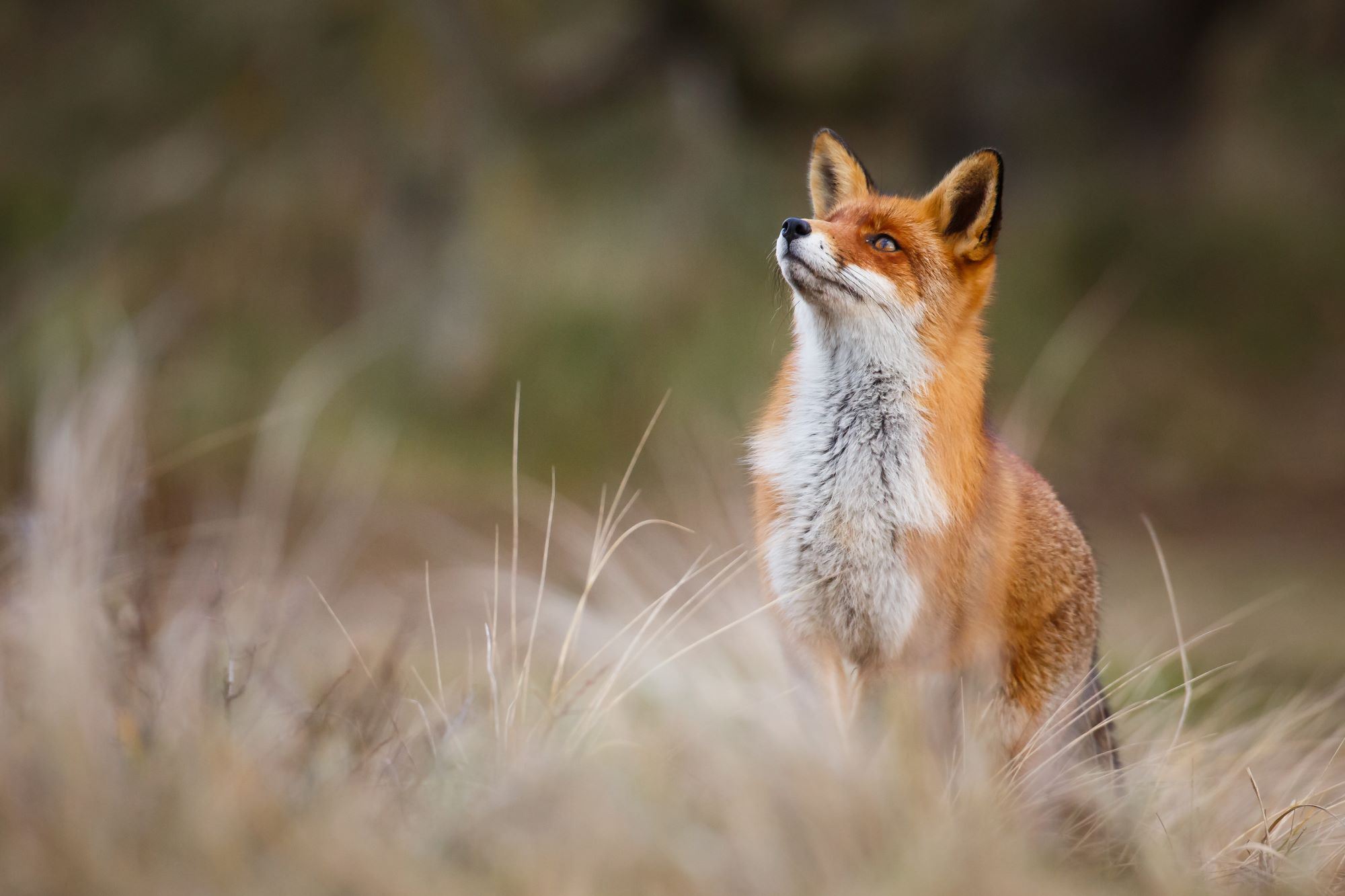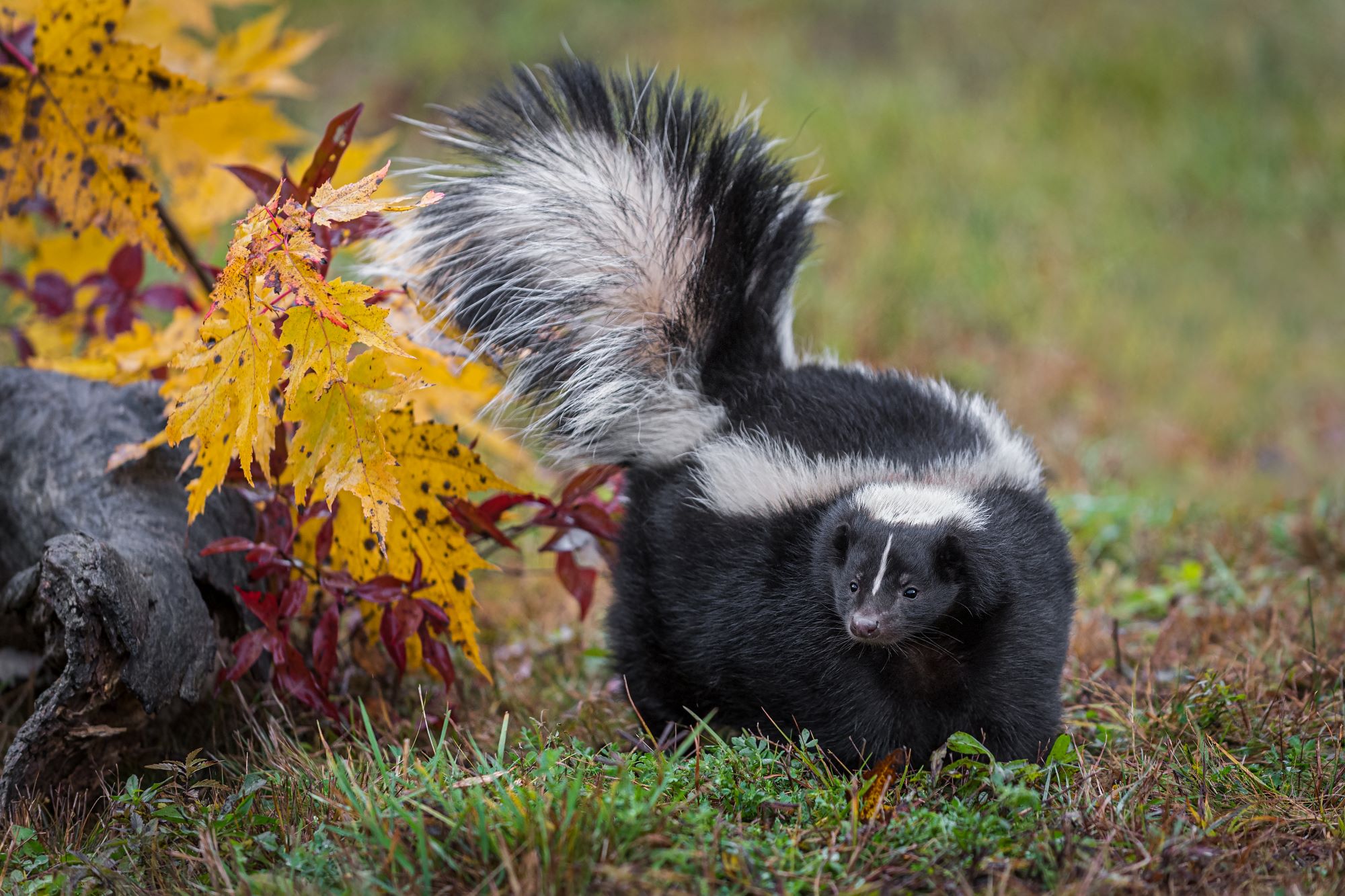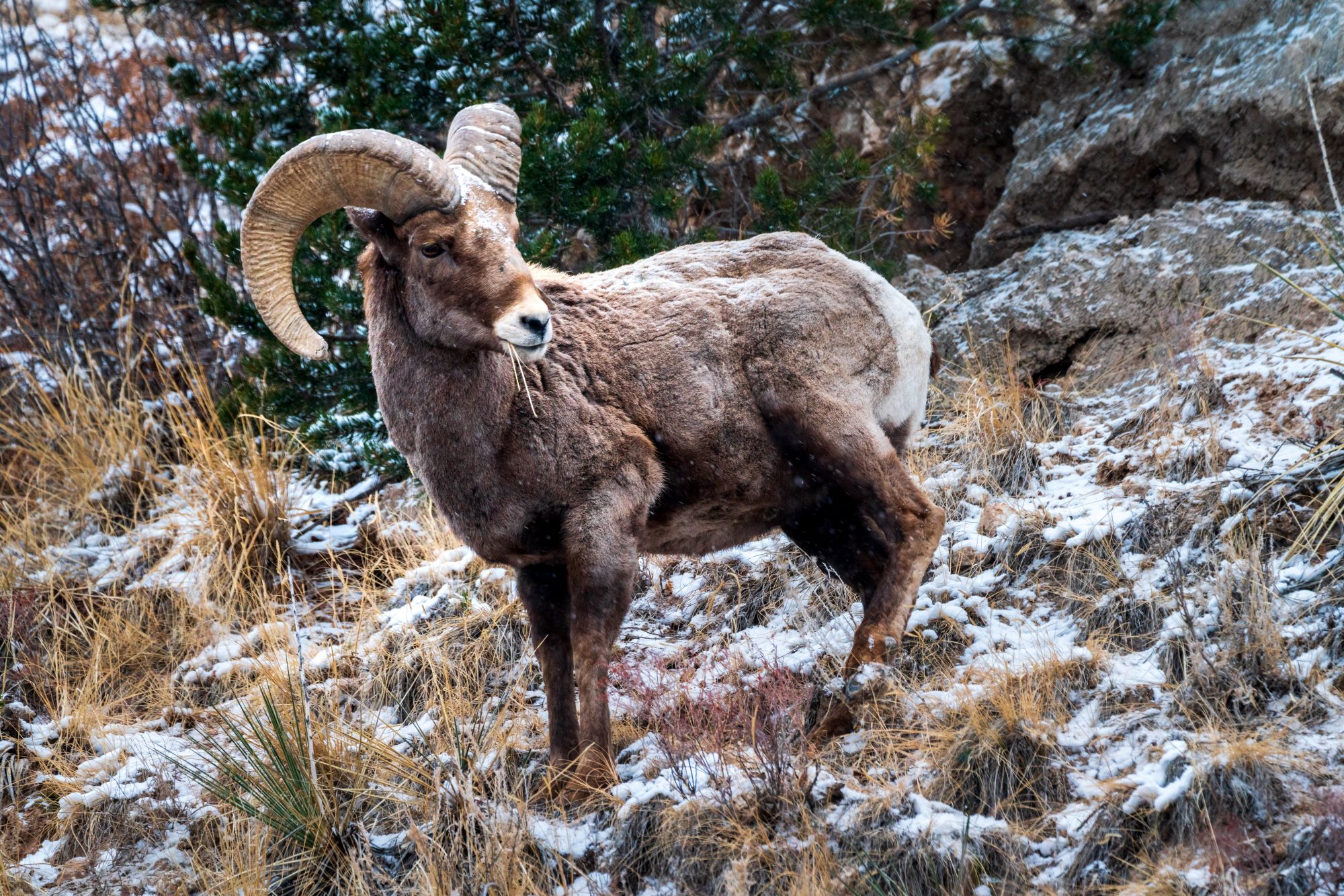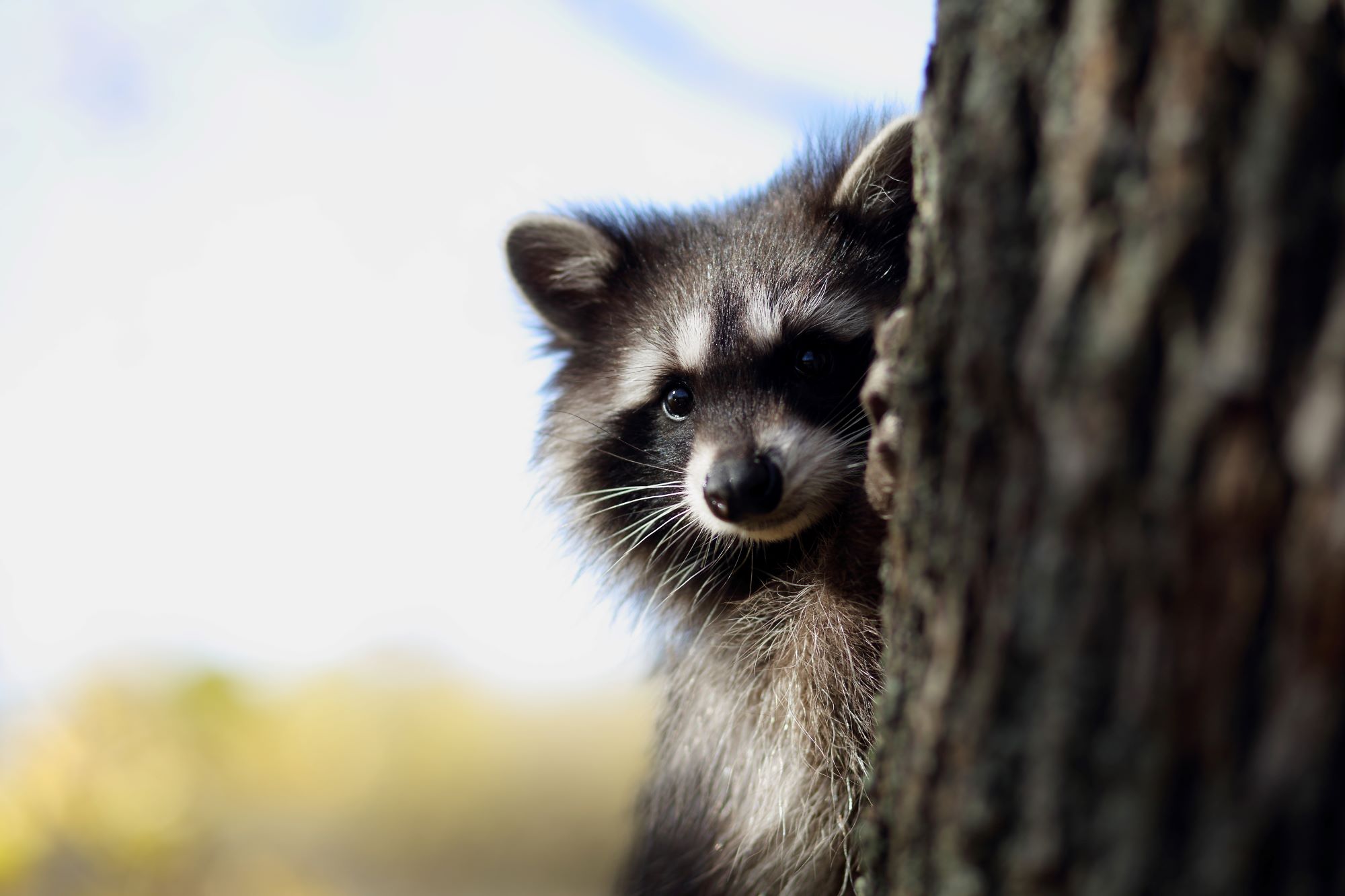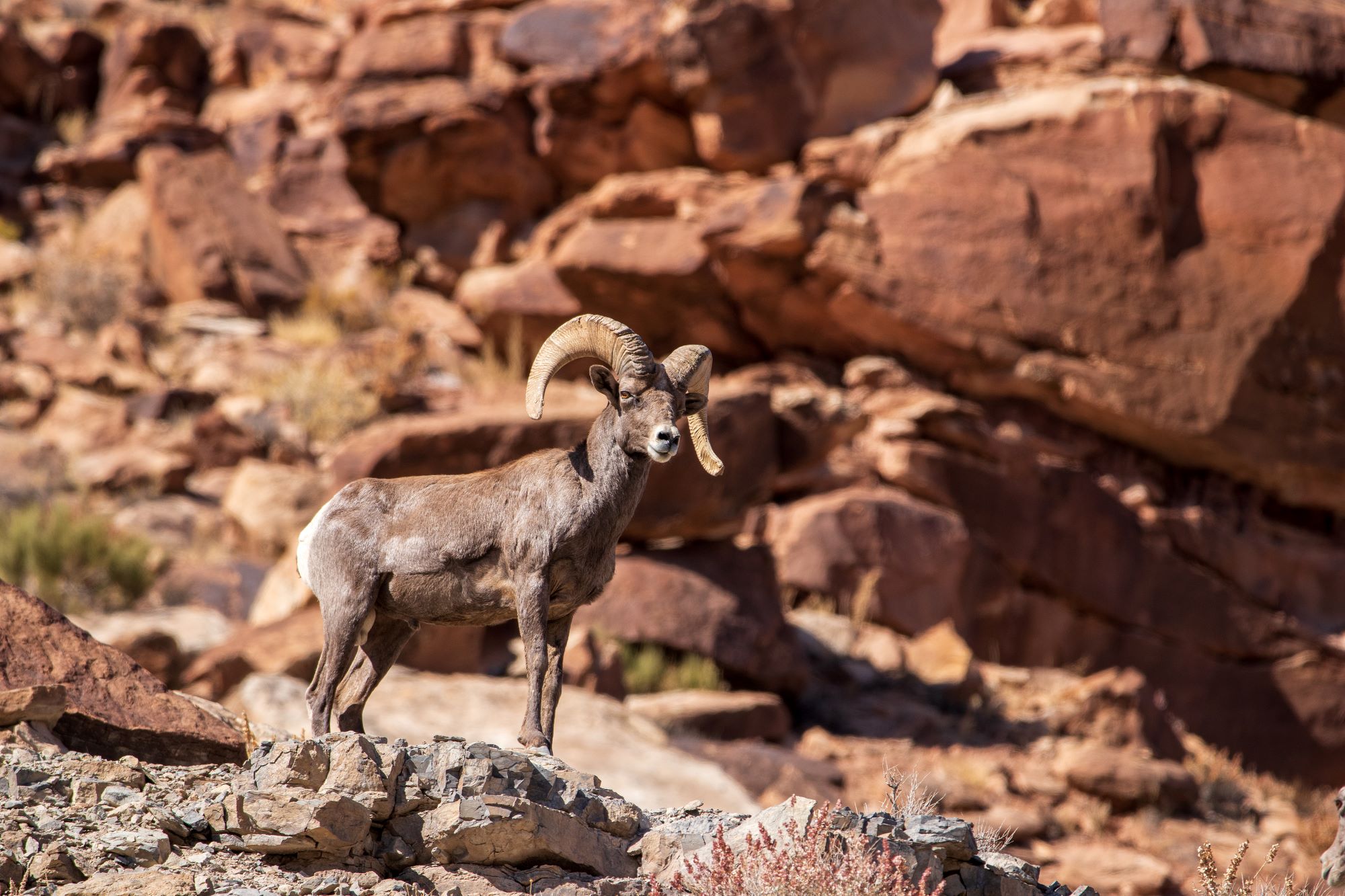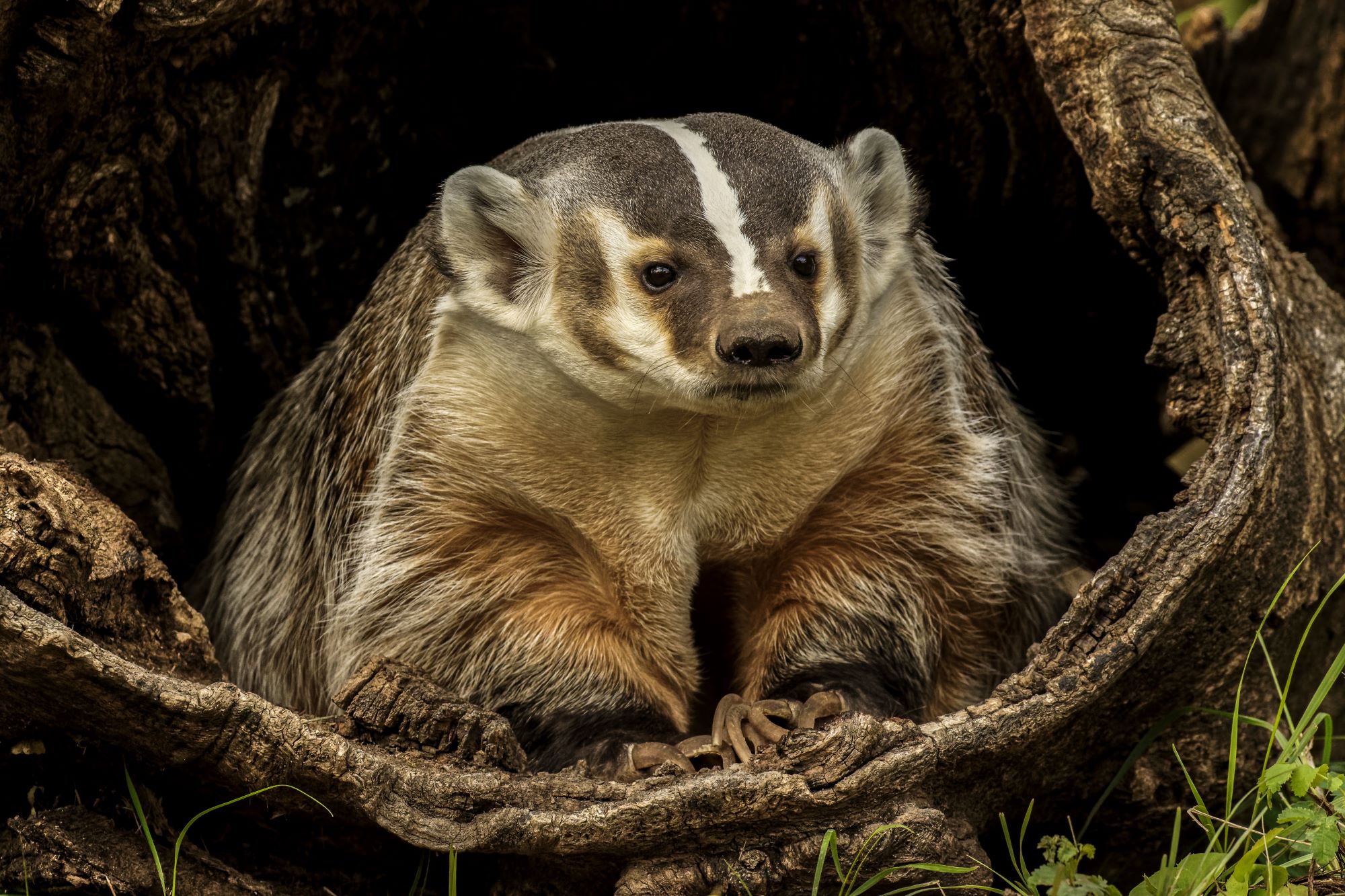
Wildlife in the Salt Lake City Area
In the Salt Lake City area, a diverse range of wildlife thrives, shaped by the region's unique blend of mountainous terrain and semi-arid valleys. The most commonly sighted mammals include mule deer, known fr their large, mule-like ears and black-tipped tails, and the elusive mountain lions, or cougars, top predators that maintain the ecological balance by controlling the population of prey like deer. The Wasatch Range surrounding the city is home to the majestic Rocky Mountain elk, notable for their size and the males' distinctive antler displays, especially during the fall mating season. This area also supports smaller mammals such as raccoons, foxes, and various rodents, each playing a vital role in the local ecosystem. The diverse habitats in and around Salt Lake City, ranging from rugged mountains to valley floors, create a rich tapestry of wildlife, contributing to the area's natural beauty and ecological complexity.
Species Profiles:
- Mule Deer: In the Salt Lake City area, mule deer are a common and emblematic wildlife species, particularly visible in the foothills and mountainous regions surrounding the city. Characterized by their large, mule-like ears that move independently and black-tipped tails, these deer are well-adapted to the varied terrain, from semi-arid environments to forested mountain areas. They are primarily active during dawn and dusk, feeding on a diverse diet of vegetation. Mule deer are essential to the local ecosystem, serving as prey for predators like mountain lions and contributing to the seed dispersal of many plant species. Their presence is a familiar and cherished aspect of the natural landscape in and around Salt Lake City, offering residents and visitors alike a glimpse into the region's rich wildlife.
- Elk: Elk in the Salt Lake City area, particularly in the higher elevations of the surrounding Wasatch Range, are a majestic and significant part of the local wildlife. Part of the Rocky Mountain elk subspecies, they are known for their impressive size and the males' notable antlers, which they shed and regrow each year. These herbivorous mammals primarily graze on grasses, forbs, and shrubs, playing a vital role in shaping the vegetation and ecological balance of the area. Elk are most active during dawn and dusk, and their presence is especially notable in the fall mating season, when the males' distinctive bugling calls, used to attract mates and challenge rivals, can be heard echoing through the mountains. The sight and sound of elk in their natural habitat add to the rich outdoor experience that the Salt Lake City region offers to hikers and nature enthusiasts.
- Mountain Lions: Mountain lions, also known as cougars or pumas, are a key part of the wilderness around Salt Lake City, particularly in the more remote and rugged areas of the Wasatch Range. These elusive and solitary predators are well-adapted to a variety of habitats in the region, from lowland valleys to mountain forests. While sightings are rare due to their secretive nature, evidence of their presence, such as tracks or prey remains, is occasionally encountered by hikers and outdoor enthusiasts. Mountain lions primarily prey on deer, but their diet can also include smaller mammals and even insects. Their role as apex predators is crucial in maintaining the balance of the local ecosystem, regulating prey populations and thus influencing the overall health and diversity of the habitat. Despite their presence, mountain lion attacks on humans are extremely rare, but awareness and understanding of these magnificent animals are important for safely sharing the natural landscapes around Salt Lake City.
- American Bison: In the Salt Lake City area, particularly near the Great Salt Lake, bison are a notable presence, especially on Antelope Island in the Great Salt Lake. This island, a state park, is home to one of the largest and oldest publicly owned bison herds in the United States, originally established from a small group in the late 19th century. These majestic animals play a crucial role in the island's ecosystem by maintaining the health of grasslands through their grazing habits, which helps in plant diversity and soil aeration. The Antelope Island bison herd is not only significant for its contribution to the ecosystem but also as a symbol of successful wildlife conservation, with the herd managed through annual roundups to ensure their health and sustainable population. This makes the island a unique destination for visitors to observe these iconic animals of the American West in a natural setting.
- Coyotes: Coyotes in the Salt Lake City area are a common and adaptable presence, thriving in a variety of habitats from the urban edges to the more remote regions of the Wasatch Range. These medium-sized canids are known for their adaptability, intelligence, and opportunistic feeding habits, which allow them to thrive in close proximity to human developments. Coyotes primarily feed on small mammals, insects, fruits, and occasionally urban refuse, playing an important role in the ecosystem as both predator and scavenger. While they are generally elusive and avoid direct human interaction, their distinctive howls and yips can often be heard at dawn and dusk, adding to the area's natural ambiance. The presence of coyotes in and around Salt Lake City is a testament to the resilience of wildlife and the diverse habitats the region offers, as well as a reminder of the intricate balance between urban environments and the natural world.
- Beaver: Beavers in the Salt Lake City area play a significant ecological role, particularly in the wetland and riparian habitats around the city and along the streams and rivers of the nearby Wasatch Range. Recognized by their large, flat tails and impressive ability to engineer the landscape, beavers are nature's architects, building dams and lodges that create wetlands, which serve as vital habitats for a variety of other species. These activities also contribute to water purification and the reduction of soil erosion. Beavers are mainly nocturnal and herbivorous, feeding on tree bark, aquatic plants, and leaves. Their presence in the Salt Lake City region is indicative of healthy waterways and ecosystems. Moreover, the resurgence of beaver populations in areas where they were once depleted due to fur trading is a positive sign of environmental restoration and conservation efforts in and around the city.
- North American Porcupine: Porcupines in the Salt Lake City area are a notable component of the local wildlife, inhabiting the forests and wooded regions around the city, particularly in the foothills of the Wasatch Range. Known for their distinctive quills, which are a key defense mechanism against predators, porcupines are primarily nocturnal and spend much of their time in trees. They have a diet that mainly consists of leaves, bark, and the cambium layer of trees, which can sometimes lead to conflicts with human activities, especially in areas where forestry or orchard management is a concern. Porcupines are solitary animals, except during the mating season, and are known for their slow and lumbering gait. Their presence in the Salt Lake City area is a reminder of the diverse and robust nature of the region's ecosystems, where a wide array of wildlife species, including these unique and often misunderstood creatures, coexist.
- Pronghorns: In the Salt Lake City area, pronghorns, often mistakenly referred to as antelope, are a unique and fascinating aspect of the local wildlife. These fast and graceful creatures are native to the open plains and basins around the Great Salt Lake, where they find the expansive visibility and sparse vegetation suitable for their lifestyle. Pronghorns are known for being the fastest land mammal in North America, a trait that allows them to escape predators with remarkable bursts of speed. They primarily feed on a variety of grasses and shrubs, adapting well to the semi-arid conditions of the region. The presence of pronghorns in and around Salt Lake City is a delightful sight for wildlife enthusiasts and highlights the diverse range of habitats that the area supports, from mountainous terrains to open grasslands. Their existence in these parts underscores the importance of conserving these open spaces to maintain the ecological balance and biodiversity of the region.
- Black Bear: Black bears in the Salt Lake City area, though not commonly seen, are part of the region's diverse wildlife. These bears, typically found in the more remote and forested areas of the Wasatch Range, are the only bear species native to Utah. They have a varied diet, feeding on berries, nuts, insects, and occasionally small mammals, which makes them important seed dispersers and contributors to the ecological balance. Black bears are generally shy and avoid human contact, but their presence near urban areas can increase during years of poor natural food availability. This situation underscores the importance of responsible wildlife management and public education on how to safely coexist with these majestic, yet potentially dangerous, animals. The presence of black bears in the Salt Lake City region is a testament to the relatively healthy and diverse ecosystems found in and around the city's natural areas.
- Red Fox: In the Salt Lake City area, foxes add a touch of elusive charm to the local wildlife scene. The most common species found in this region is the red fox, distinguishable by its reddish-brown fur, bushy tail with a distinctive white tip, and pointed ears. These adaptable creatures thrive in a variety of habitats, from the urban edges to the more remote and wooded areas of the Wasatch Range. They are primarily nocturnal, making sightings a special treat for the observant nature enthusiast. Foxes in this area play an important ecological role as both predators and prey, feeding on small mammals, birds, and even insects, while also serving as food for larger predators. Their presence in the Salt Lake City region is indicative of the diverse and healthy ecosystems found in and around the city, contributing to the rich tapestry of urban and wild interactions.
- Striped Skunk: Skunks are a common yet often unseen part of the local wildlife, known for their distinctive black and white coloring and their infamous defensive spray. The most common species in this region is the striped skunk, which is easily recognizable by the two white stripes running down its back. These nocturnal mammals prefer habitats that offer both cover and easy access to food, making urban fringes, woodlands, and grassy areas ideal. Skunks feed on a varied diet including insects, small mammals, fruits, and even garbage, playing a role in pest control and seed dispersal. While they are generally non-aggressive, their presence is a reminder for residents and visitors to be mindful and respectful of wildlife, especially given the skunk's unique and potent method of self-defense. The existence of skunks in the Salt Lake City area highlights the diversity of wildlife that coexists with urban development, adapting to and thriving in the varied landscapes of the region.
- Mountain Goats: Mountain goats in the Salt Lake City area, particularly in the high, rugged terrains of the Wasatch Range, are an awe-inspiring sight, embodying the wild essence of the region's alpine environments. These sure-footed animals, with their thick white coats and black horns, are adapted to life in steep, rocky areas, where they graze on a variety of vegetation, including grasses and low shrubs. Mountain goats are known for their incredible climbing abilities, often seen scaling near-vertical cliffs with ease. While they are more reclusive and less frequently spotted than some other wildlife, their presence is a captivating highlight for hikers and nature enthusiasts exploring the higher elevations around Salt Lake City. The survival and visibility of mountain goats in this area are reflective of the successful conservation efforts and the commitment to preserving the natural alpine habitats within and around the city.
- Rocky Mountain Bighorn Sheep: Bighorn sheep, specifically the Rocky Mountain bighorn subspecies, are a remarkable and somewhat elusive component of the wildlife in the Salt Lake City area, particularly in the rugged terrain of the Wasatch Range. These majestic animals are well-adapted to the steep, rocky mountainous habitats where they reside, easily identifiable by their large, curved horns (particularly prominent in males) and their sure-footedness on precarious slopes. Bighorn sheep mainly graze on grasses and other vegetation, playing an essential role in the ecological dynamics of their habitat. Their presence in the region, although not as commonly observed as other wildlife due to their preference for remote and rugged areas, is a significant indicator of the health and preservation of these natural habitats. Conservation efforts have been crucial in maintaining and restoring bighorn sheep populations, making their continued existence in the Salt Lake City area both a conservation success story and a testament to the region's natural diversity.
- Racoon: In the Salt Lake City area, raccoons are a common and adaptable presence, flourishing in both urban and suburban environments as well as the surrounding natural habitats. These nocturnal mammals, known for their distinctive masked faces and ringed tails, have successfully adapted to the city's environment, utilizing parks, riverbanks, and residential areas as their habitats. Raccoons in Salt Lake City are omnivorous and opportunistic feeders, often seen rummaging through garbage cans, gardens, and compost bins in search of food. While they play a role in the urban ecosystem by controlling insect and rodent populations, they can also become a nuisance due to property damage and potential health risks, such as rabies. Their adaptability and intelligence make them fascinating urban wildlife residents, but they also pose challenges in terms of wildlife management and public education regarding safe and responsible cohabitation with these resourceful creatures.
- Desert Bighorn: In Utah, a subspecies of North American bighorn sheep known scientifically as Ovis canadensis nelsoni, are an iconic and resilient species adapted to the arid, rugged terrains of the state's southern and southeastern regions, including areas like Canyonlands and Zion National Park. Slightly smaller and lighter in color than their Rocky Mountain counterparts, desert bighorns are uniquely adapted to desert conditions with features for water conservation and tolerating high temperatures. They possess magnificent curved horns, used in dominance displays and mating rituals, and are highly skilled climbers, navigating steep, rocky cliffs to evade predators and forage on a diet of grasses, forbs, and moisture-rich shrubs. Despite past population declines due to habitat loss, competition with livestock, and disease, concerted conservation efforts focused on habitat protection and population management have led to a gradual increase in their numbers. However, challenges like habitat fragmentation and disease transmission remain, making ongoing conservation efforts crucial for their survival in Utah's desert landscapes.
- American Badger: Known scientifically as Taxidea taxus, is a distinctive and important member of Utah's wildlife, inhabiting open grasslands, agricultural areas, and desert scrublands across the state. These solitary mammals are recognized for their robust, low-slung bodies, striking facial markings with white stripes and black patches, and formidable digging capabilities. Their powerful limbs and sharp claws enable them to construct extensive burrow systems which serve as shelters and play an ecological role in altering soil composition and providing habitats for other species. American badgers are carnivorous, primarily preying on small mammals like rodents, thus playing a crucial role in controlling rodent populations and maintaining ecological balance. Generally nocturnal and solitary except during breeding, they face challenges such as habitat loss and human-wildlife conflicts, making their conservation important for maintaining the ecological integrity of Utah's diverse landscapes.
